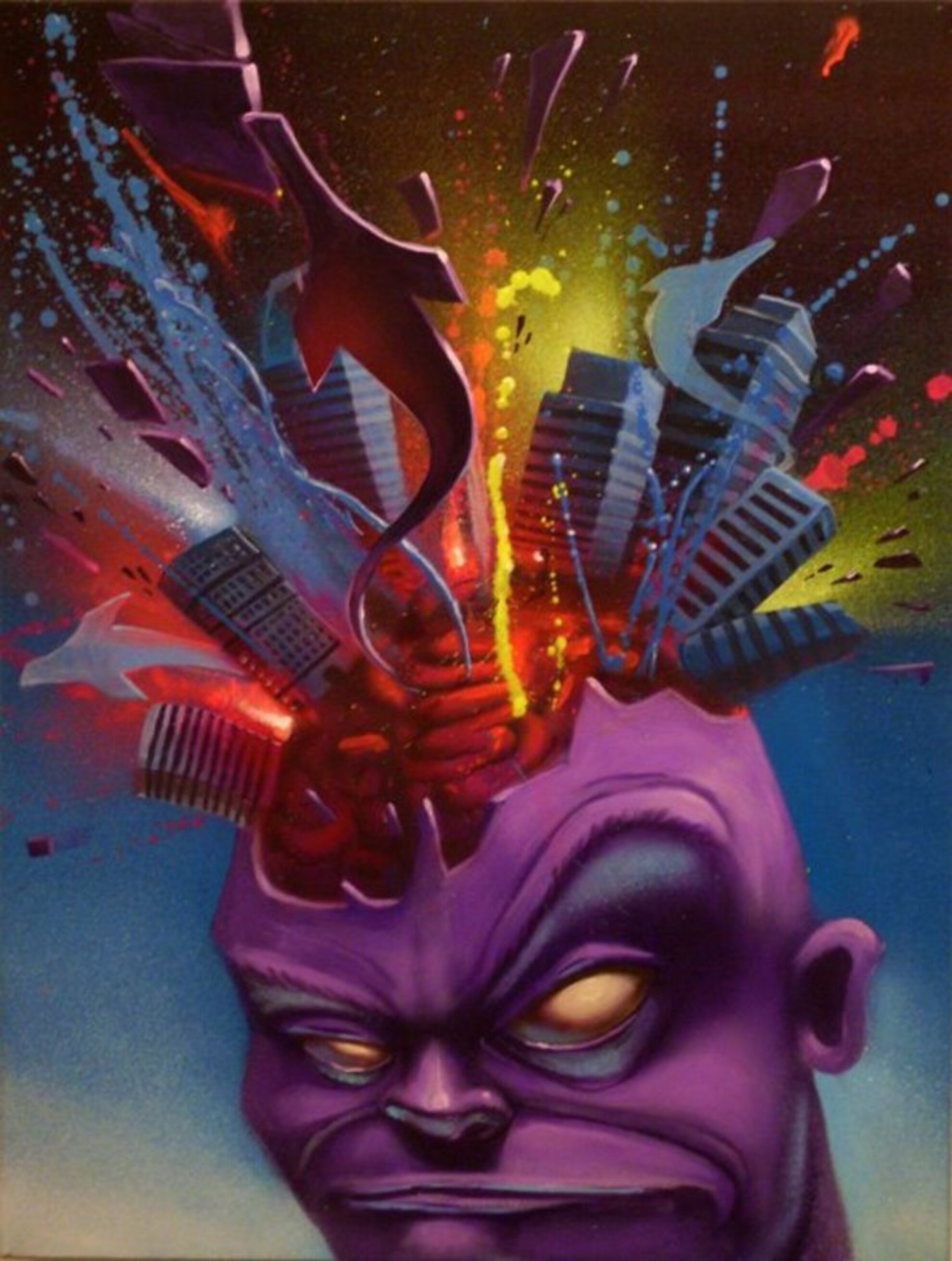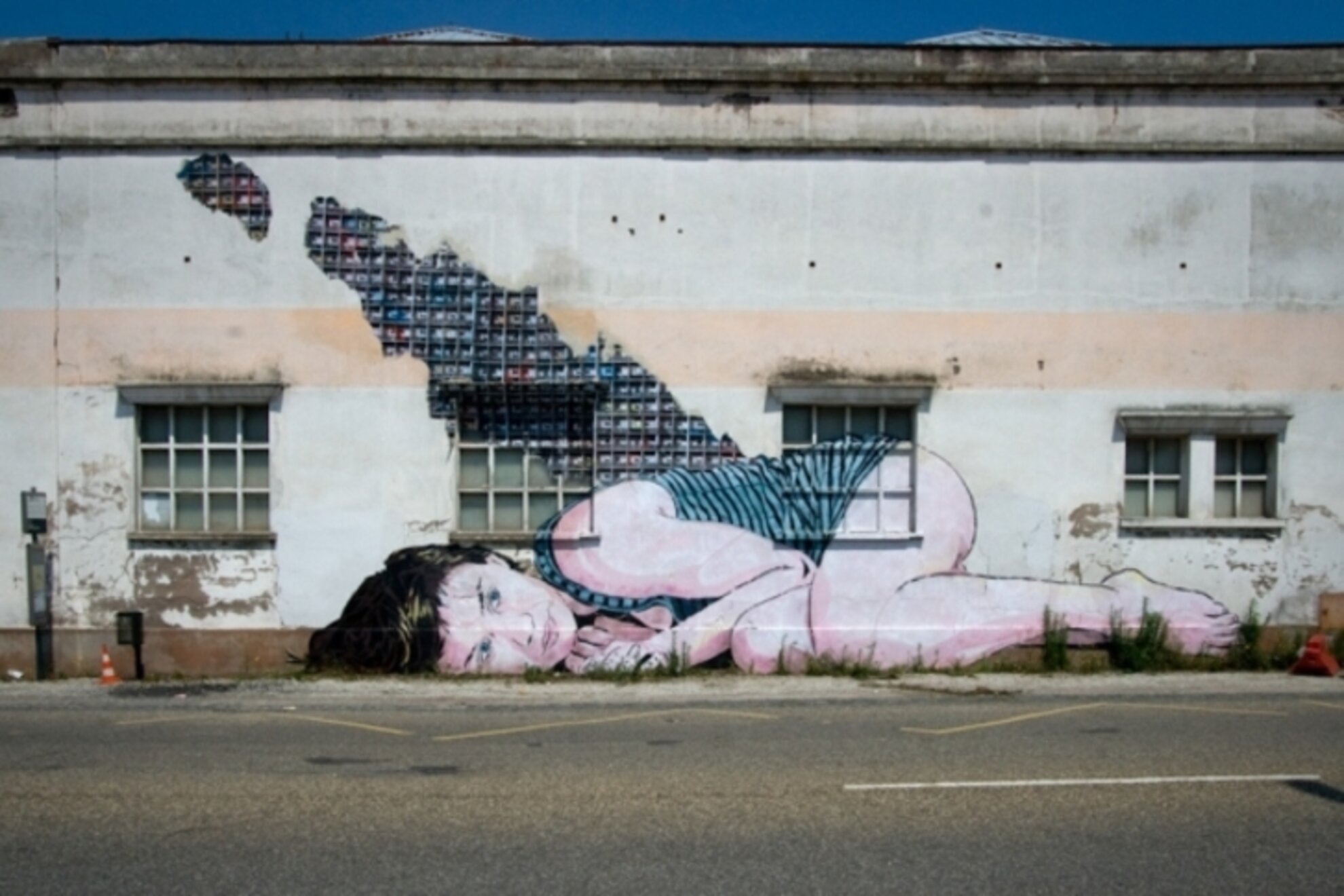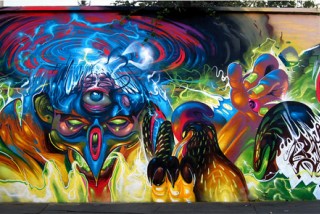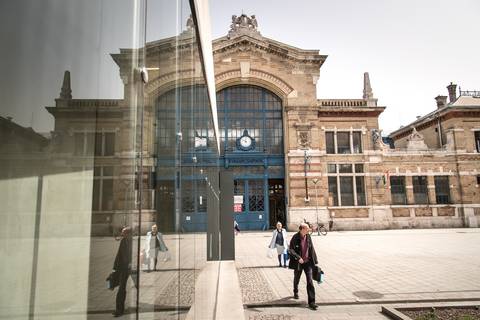The starting program of this year’s Art Moments is a real treat for the lovers of urban art. The exhibition dubbed Urban Tactics features the most outstanding pieces of street art by Hungarian and foreign artists alike. We asked the organizers and the two Hungarian participant artists, Fat Heat and Breakone about the satellite event. They talked about their mission, the credibility of graffiti indoors, in an exhibition room, and what exactly graffiti is.
We Love Budapest: You decided to organize the street art exhibition “Urban Tactics” at the end of Design Week and at the start of Art Moments. How did this initiative come about?
Noémi Nádudvari - Art Moments: This is the first year that Art Moments has joined the program of Design Week. So we came up with this street art initiative, where we didn’t want the usual graffiti jam but rather we wanted to show the foreign trends to our audience that doesn’t have the opportunity to travel to exhibitions, and only follow the directions street art takes on the internet. This way we might narrow the gap between said audience and street art. Also, we’re planning on somehow dissipating the misconceptions about graffiti, and showing how much street art has to offer.WLB: So basically you’d like to get people to realize that urban art is not equivalent to street vandalism?
Breakone: The most important thing is that there’s going to be an exhibition that is about to bring together people who share the common root of graffiti. What we call graffiti is considered by many to be vandalism, and we want to show that this genre qualifies as so much more. Those who attend can see the difference. First of all, urban art is a consequence, something that came into being from many different things, such as comics or cartoons. Graffiti by itself conveys not more than “hey there, here I am, this is me, signing off”, but street art is more like a way to leave a message that can be social-political or a simple and kind eye-catcher phrase, but either way, it is there to address its audience. This is the reason why the works we’re putting on display are not graffiti in the classical sense. It might be an exaggeration but they’re some kind of “post-graffiti”.
NN:
The basic difference is apparent: these works are taken out of their original environment, they’re put on canvas. It’s difficult to define this genre, and the question whether the art of the street can be constrained within four walls arises inevitebly. Whether displaying graffiti in a white room is credible or not has been a controversial topic to this day.
Breakone:
What’s inside has become another kind of art.You didn’t have to cut through fences or walk rooftops to create these. Yet, both graffiti are made by the same people, and this is a crucial difference. The most peculiar thing is that I, for one, practice both to this very day. If you like what I do out there, come and see for yourself what I’m capable of doing here.Fat Heat: For me the essence of the exhibition is that in this past 40 years graffiti has become such a force that it pours talented people out of itself. Recently I like to think of graffiti as breeding ground. If you look around a little, you can see how it produced numerous professionals among typographers, cartoonists and other artists. Graffiti is a simple word but it means much more than what comes into mind at first.

WLB: The exhibition features six foreign guest artists, too. They are outstanding figures of street art, and they’re staying in Budapest for the weekend. What guidelines did you follow when choosing them?
Breakone: The most important factor was for us to show as broad a spectrum of the genre as possible, and thus we invited the more significant artists from the simplest to the most extreme. They have different personalities, and I’m a big fan of all of them.
NN: This is exactly what we set out to do in the first place. We didn’t want our visitors to get a simplistic picture that would only reinforce a preconception. Rather, we wanted to show what this genre can provide. Of course, we couldn’t present all of it but it would be pointless anyways. These are not categories but examples as to how many directions the art of graffiti could take. Those who are dedicated to this culture could find the different techniques interesting but ordinary people might find only one of the artists palatable.
Fat Heat: The title “Urban Tactics” itself suggests exactly this. We wanted to present these different “tactics” with the many faces and colors of the genre.
WLB: So could you introduce the guest artists with a sentence each? What do we need to know about them and why is it special what they do?
Fat Heat & NN & Break One: Mad C is a girl from Germany who paints for ages. The stuff she’s going to bring is totally letter-based. The most important factors in her art are color and form of the letters. After all, she is the one who represents the classical art of graffiti, if you will.
Robert Proch comes from Poland, which gives an interesting twist to things with Poland being the incumbent president of the EU. As for his world of art, he builds on absolute impressions, he is the most graphic among the seven artists. He is an animator at heart, and it’s seen from his works. He’s quick at drawing and the way he uses his brush is very peculiar.
Jana und Js is a French-Austrian duo, and they represent street art, meaning they use stencils. This style is done with a piece of paper, foil or anything similar for stencil and spray is applied through it on a surface. They have this interesting game, when they make an object from the passers-by.
R.A.M. is capable of setting the canvas on fire or pouring something on it anytime. He’s greatly influenced by trance music. He’s very enegetic when painting, and makes totally abstract things.
Julian Kimmings is the absolute favorite of the audience. His portraits are very interesting, easily lovable, a kind of “bittersweet trash”, that can become even more intense if you spend some time in front of his paintings.

WLB: But let’s not forget that you organizers are exhibitors yourselves. How did graffiti become part of your lives?
Fat Heat: I’ve been painting since 1998, when an elementary school classmate of mine made a copy of the “No fear” logo, whose meaning or origin I didn’t know anything about, but it aroused my interest. Not much later I was bold enough to start making graffiti at dangerous places but then I gradually changed to focus on legal graffiti, that opened up completely new opportunities. For example, if not for the graffiti, I wouldn’t have started working as a graphic designer. On the whole I’m very happy that I set out on this path, and managed to get from A to B, and that we started our team. I think my art is quite versatile ranging from classical graffiti to letters shaped in 3D and characters. Practically, one was born out of the other. My art comes into being online, the ways are always changing. The world of the comics has a great influence on my art. I paint colorful, illustrative things. There are paintings I complete in a day but there are others I keep changing over and over again for weeks.
Breakone: It was 10 years ago when I felt myself drawn to graffiti, and I couldn’t help starting doodling. Later a book containing American graffiti influenced me, too. Then I developed myself at a drawing school and the arts college, too, in order to get to new levels. Going on as a figurative artist, I focused on the details. As soon as I realized that figures can be drawn, I persisted, and did nothing else. I’ve always wanted to communicate with my drawings, so I’ve never been a true graffiti artist.
The world of the comics started to mingle with my current state of mind, and this is what characterizes me the most. At first glance it seems chaotic but it’s very elaborate. I weave little stories into a picture, which becomes a sort of “visual diary”. They are either fictitious or non-fictitious montages. Sometimes the title comes first, only then the graffiti itself. For me titles are important. I’m exhibiting one graffiti this time, and it reflects my current state of mind. It’s a little chaotic because I’ve just moved back from Portugal, and these kind of impulses are arising from me. You can see them in the picture titled “Time is the enemy”.WLB: When is the official opening of the exhibition and what programs are you offering at the start?
NN: The opening is on 8 October, this Saturday in Design Terminal, and visitors are welcome until 30 October, the end of Art Moments. On the opening day the exhibition will feature live painting, where all of the artists are going to paint at the scene. In addition, as a prelude to the program the urban art artists from Hungary and abroad are going to paint some billboards, so keep your eyes open when walking in the city.




